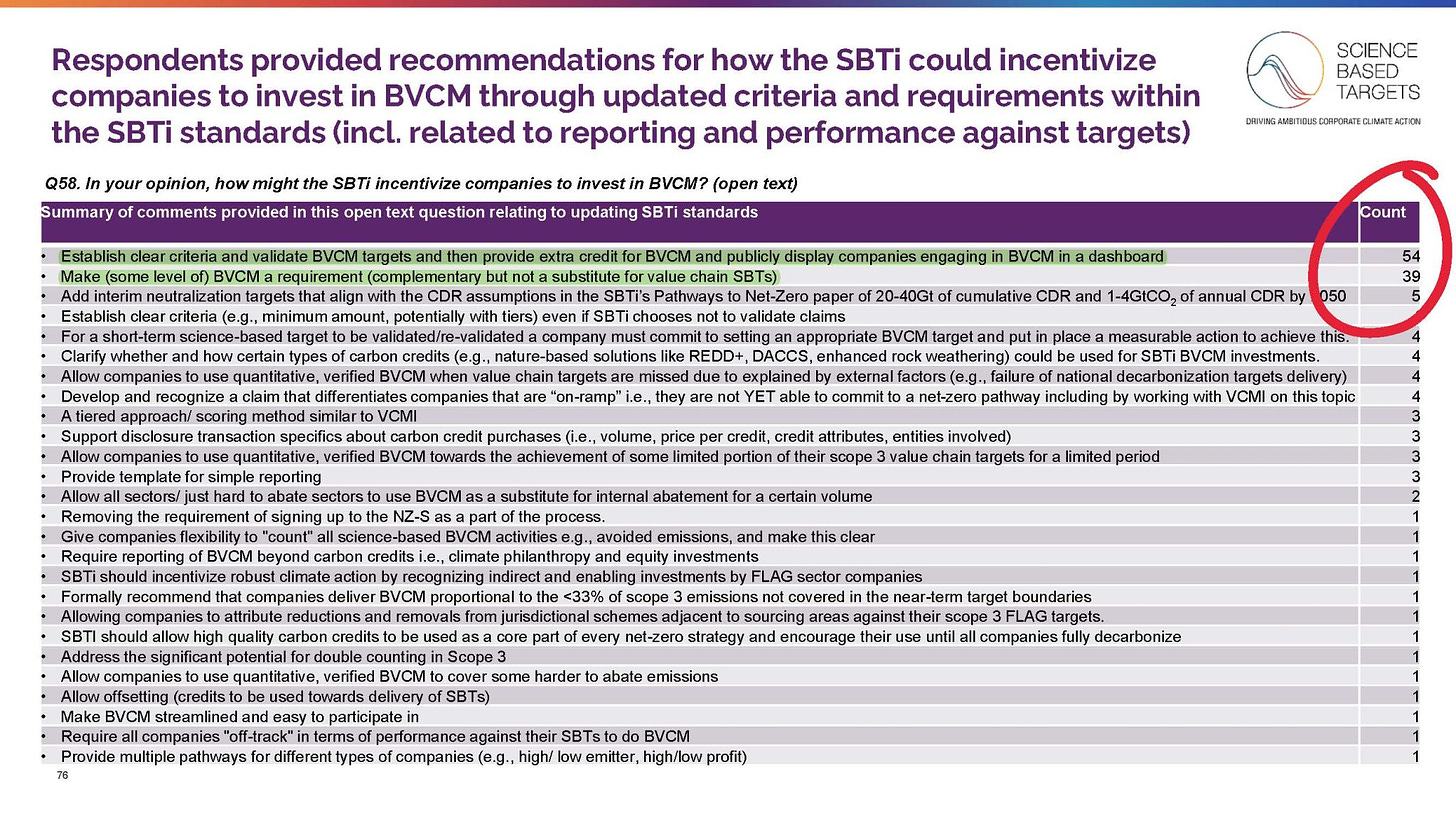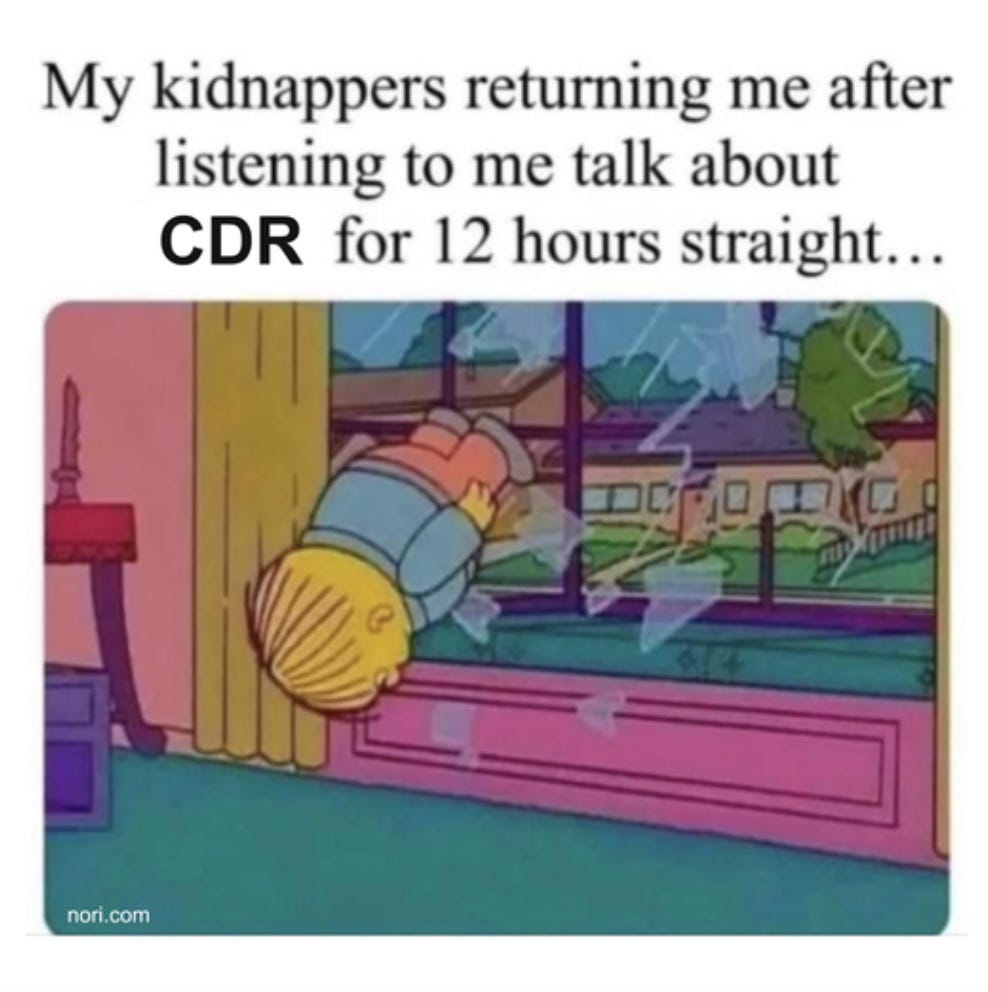The Carbon Lowdown #32
Welcome to The Carbon Lowdown! A fortnightly newsletter from Supercritical.
⭐️ Supercritical highlight ⭐️
Last Wednesday we released the Climate 100, celebrating tech companies leading the way in taking climate action. We did a mini edition of The Carbon Lowdown where we unpicked the list, there were some surprising stats… Check it out!
🍃 Carbon removal
What is happening in the world of carbon removal?
🗞 Only 0.5% of Companies with SBTi Targets Have Purchased Carbon Removal
The carbon removal industry is struggling to gain momentum amongst SBTi signatories. CDR.fyi found only 0.5% of companies committed to science-based targets purchase durable carbon removal. That’s 32 companies out of 6,000… The urgent need to scale CDR is clear, so why aren’t the most ‘ambitious’ climate-leading corporations doing so?
We covered CDR market analysis by BCG in our last edition which predicts that demand will outstrip supply, leading to a potential scramble for high-quality credits in the 2030s and 40s. The sensible thing for large companies with SBT net zero commitments would therefore be to get involved with a crucial aspect of their net zero journey now, so why isn’t this happening?
The SBTi does not stipulate that a company needs to purchase carbon removal until your net zero date i.e. 2050. Although our planet dearly needs it, the SBTi hasn’t mandated it so there’s no incentive to buy now.
The SBTI has attempted to encourage companies to interact with carbon removal through their Beyond Value Chain Mitigation guidance (BVCM). However, guidance here is a loose term and there’s no framework or template for a company to build a strategy around.
In a public consultation on incentivising BCVM, the overwhelming majority of responses requested clearer criteria, extra credit and some level of mandatory action (see image below).

From this response, it’s clear that SBTi signatories are paralysed, waiting for the SBTi to give clear guidance on when and how they should engage with carbon removal.
Our view? This guidance can’t come soon enough, both for the burgeoning industry and our planet. Over to you SBTi…
🤔 Is the ‘moral hazard’ argument real?
Concerns have persisted within the climate community that reliance on future carbon removal deployment could delay urgent emissions reductions in the short term. This is called mitigation deterrence. Some of you may know this as the ‘moral hazard’. There is significant disagreement on whether mitigation deterrence is a severe problem, with different groups having different standards for what would constitute evidence for mitigation deterrence.
Our friends over at CDR Policy NGO, Carbon Gap, have published a brilliant report unpicking these perceived challenges for policymakers and highlighting suggestions to avoid these issues.
This report complements a recent market analysis by Sylverra, who found those who purchase removal offsets had a higher annual decarbonisation rate compared to those who did not.
🔗 🚗 Mini links: Carbon removal
🤝 WBCSD’s guide on responsible removals, “Urgent emissions reduction is a must. But achieving net zero by 2050 demands more – it requires additional carbon dioxide removal (CDR) from the atmosphere.”
⚠️ Carbon markets going global, a great newsletter edition from the Carbon Risk
🎥 World Economic Forum has released Scaling Voluntary Carbon Markets: A Playbook for Corporate Action
🇿🇼 Zimbabwe changes plans to cut the revenue being offered to local communities to 25%
🌎 Climate and Net Zero
What is happening in the world of climate and net zero?
💻 AI tracking quality and credibility of carbon transition plans…!
In a groundbreaking report by WWF, University of Zurich, and Oxford Sustainable Finance Group, AI could identify ‘red flags’ within transition plan methodology. Such a tool could identify indicators focusing on transition plan targets, governance, strategy, and tracking over time to evaluate their ambition, credibility, and feasibility. This is exciting research which could be used to assess the quality of net zero commitments and identify greenwashing quickly and clearly.
📆 When will we hit 1.5°C?
The 1.5°C limit may seem like a faraway danger, however, it could be much closer than we think… The Copernicus ECMWF Climate Change Service has developed an interactive tool which monitors the evolution of global air temperature and estimates the date when global warming will hit the 1.5°C limit set by the Paris Agreement.
On our current trajectory, the tool predicts we will reach 1.5°C by December 2034... However, this is very much a monitoring tool and should not be interpreted as a binary future forecast!
🦋 Biodiversity market update
Whilst action on biodiversity and climate is often framed as a sacrifice of at least $2 trillion annually, the cost of inaction, especially on biodiversity is much higher.
Many credit registries are taking steps towards biodiversity credit methodologies including Gold Standard. They have partnered with France-based Organisation for Biodiversity Certificates (OBC), to develop a biodiversity certification methodology. The OBC aims to quantify biodiversity, relying on expert consensus for each ecosystem to quantify the net gain in biodiversity as a carrying capacity approach.
“Even if we transition to 100% clean energy, temperatures will continue to rise unless we also address our unsustainable relationship with nature,” wrote climate scientist Johan Rockstrom
🔗 🚗 Mini links: Climate
🌳 Salesforce in partnership with the Climate Policy Initiative (CPI), announced its support for the Mangrove Breakthrough as part of a $8.3 million grant towards climate justice and nature-based solutions.
🧊 NASA’s study found half of glaciers to vanish with 1.5°C warming and images have been released of accelerated ice melt in Greenland
💤 Slowing the UK route to net zero will worsen global climate crisis
🤑 Commercial
New partnerships, fundraises and exciting initiatives going on in carbon removal
✅ DAC is getting registered
DAC company, Climeworks, has chosen to work with the carbon removal registry, Puro.earth, for certification of their DAC credits. DAC has not been certified on a registry yet so this is big news for the engineered method.
🔦 Carbon removal method spotlight
🪨 Enhanced rock weathering 🪨
Enhanced rock weathering (ERW) takes natural weathering of silicate rocks that removes & mineralises atmospheric CO₂ and speeds it up dramatically. It does so by spreading crushed silicate rocks, making the reactive surface area much larger.
During this process, CO₂ in the atmosphere and soils is converted to dissolved bicarbonate ions. These ions can then react with other minerals to form rocks or get transported to the ocean where they remain stable for >1000 years.

This newsletter is carefully crafted by Fi Watters and Tom Previte
Fi is a Climate Consultant at Supercritical with an MSc in Climate Change from King's College.
Tom specialises in selling carbon removal at Supercritical and hosts The Carbon Removal Show podcast.





